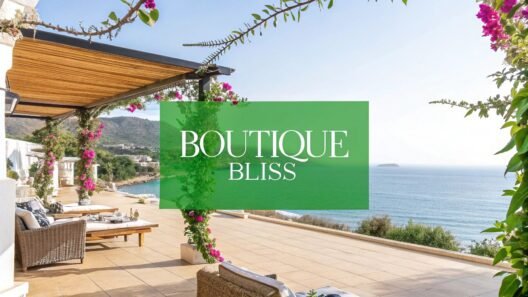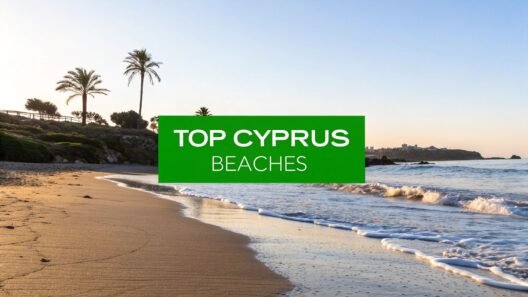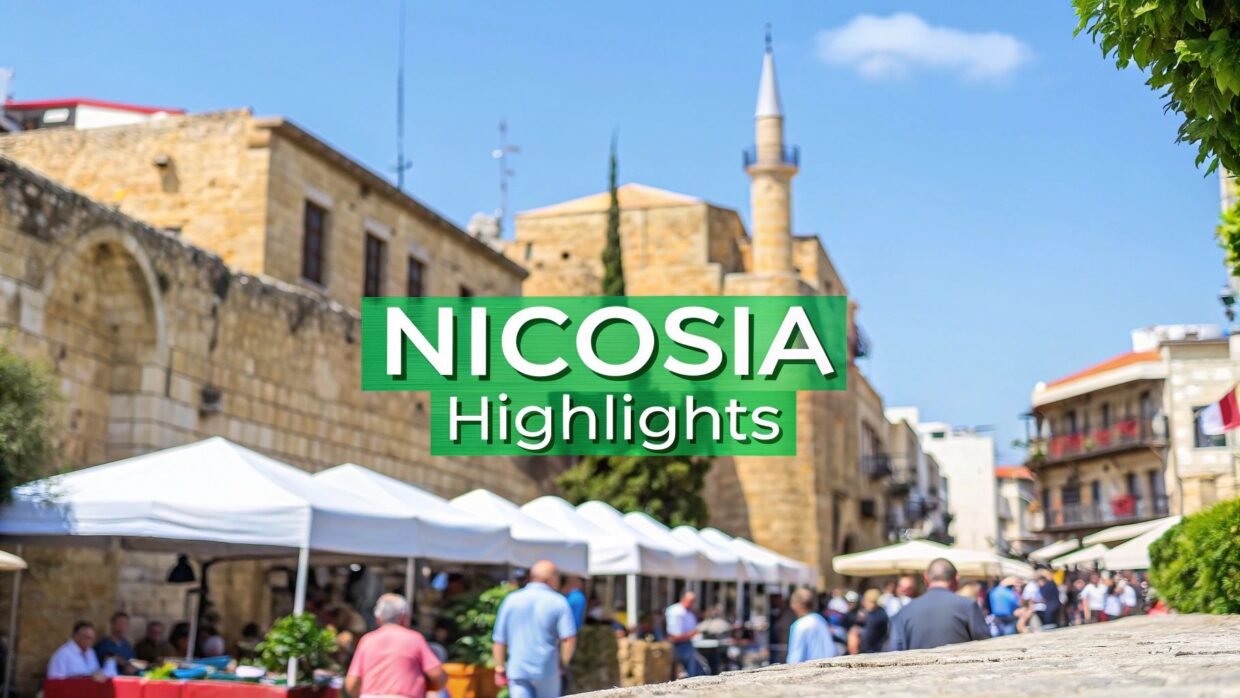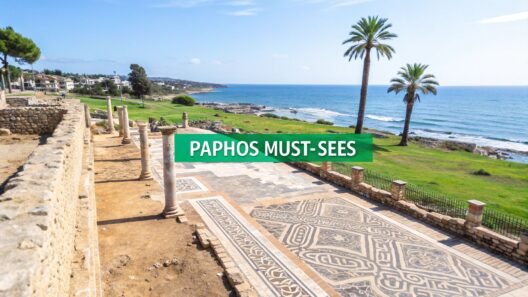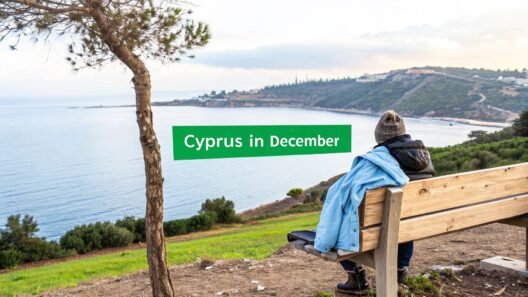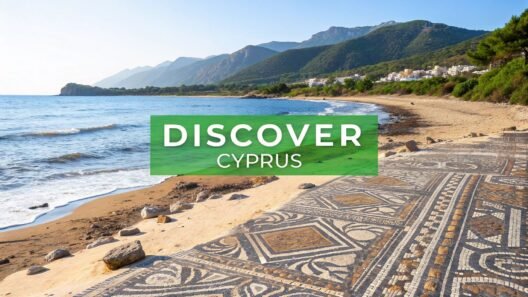Welcome to Nicosia, the world's last divided capital, a city where millennia of history, culture, and conflict are etched into every cobblestone street and ancient wall.Welcome to Nicosia, the world's last divided capital, a city where millennia of history, culture, and conflict are etched into every cobblestone street and ancient wall. Far more than just a political curiosity, Nicosia (or Lefkosia) offers a captivating journey through time, blending Venetian fortifications, Gothic cathedrals, and Ottoman inns with the vibrant pulse of a modern European city. Crossing the 'Green Line' from the south to the north is like stepping between worlds, offering a unique perspective you won't find anywhere else.
But where do you begin? Forget the generic tourist trails that barely scratch the surface. This curated guide delves deep into the most essential things to see in Nicosia, moving beyond simple descriptions to offer practical, actionable advice. We will uncover the hidden stories behind the city's most iconic landmarks, from the majestic Selimiye Mosque to the formidable Venetian Walls. You will receive insider tips to enhance your visit, helping you navigate both sides of the capital with confidence. Prepare to explore a place where history isn't just confined to museums-it's alive, all around you, waiting to be discovered. This list is your key to experiencing the authentic soul of this complex and utterly fascinating destination.
1. Selimiye Mosque (Cathedral of Hagia Sophia): A Tale of Two Faiths in Stone
The Selimiye Mosque is arguably the most significant and visually stunning landmark in North Nicosia. Its story is the story of Cyprus itself, a powerful narrative of conquest and cultural fusion written in stone. Originally consecrated in 1326 as the Cathedral of Hagia Sophia, it was a masterpiece of French Gothic architecture, serving as the coronation church for the Lusignan kings. The soaring vaulted ceilings, intricate window tracery, and imposing flying buttresses remain a testament to its mediaeval Christian origins.
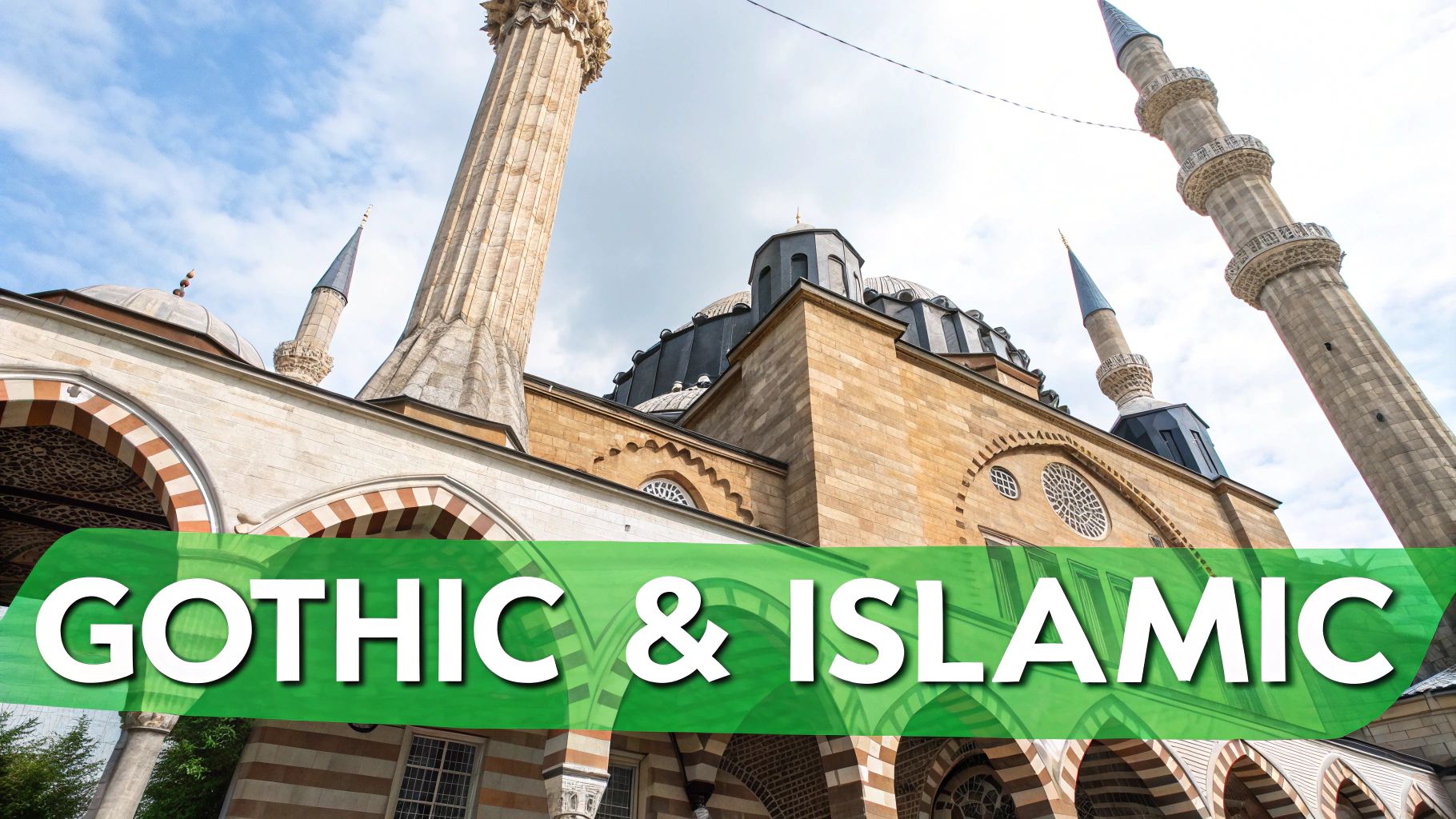
Following the Ottoman conquest in 1571, the cathedral was transformed into the city's principal mosque. The interior was whitewashed, stained-glass windows depicting biblical scenes were removed, and two magnificent minarets were added, forever altering Nicosia’s skyline. This unique architectural dialogue makes it one of the most essential things to see in Nicosia, offering a rare opportunity to witness centuries of history coexisting within a single, serene space.
Practical Tips for Your Visit
To fully appreciate the Selimiye Mosque, timing and etiquette are key. Consider these actionable insights for a respectful and memorable experience:
- Dress Code: Modesty is mandatory. Both men and women should ensure their shoulders and knees are covered. Women will be asked to cover their hair; headscarves are usually available to borrow at the entrance, but bringing your own is advisable.
- Etiquette: Remember this is an active place of worship. Remove your shoes before stepping onto the carpeted area. Keep your voice low and avoid visiting during prayer times, which are displayed at the entrance, to avoid disturbing worshippers.
- Photography: While photography is generally permitted inside, be mindful of people praying. The best light for capturing the grand exterior is often in the late afternoon when the sun illuminates the western façade.
2. Buyuk Han (Great Inn): A Merchant's Rest Reborn as a Cultural Hub
Just a stone's throw from Selimiye Mosque, you'll find Buyuk Han, or the "Great Inn". This magnificent structure is the largest and best-preserved caravanserai in Cyprus, built in 1572 shortly after the Ottoman conquest. It was constructed to house travelling merchants, their animals, and their goods. The two-storey, honey-coloured stone building encloses a large central courtyard, where a small mosque with a fountain for ablutions sits at its heart.
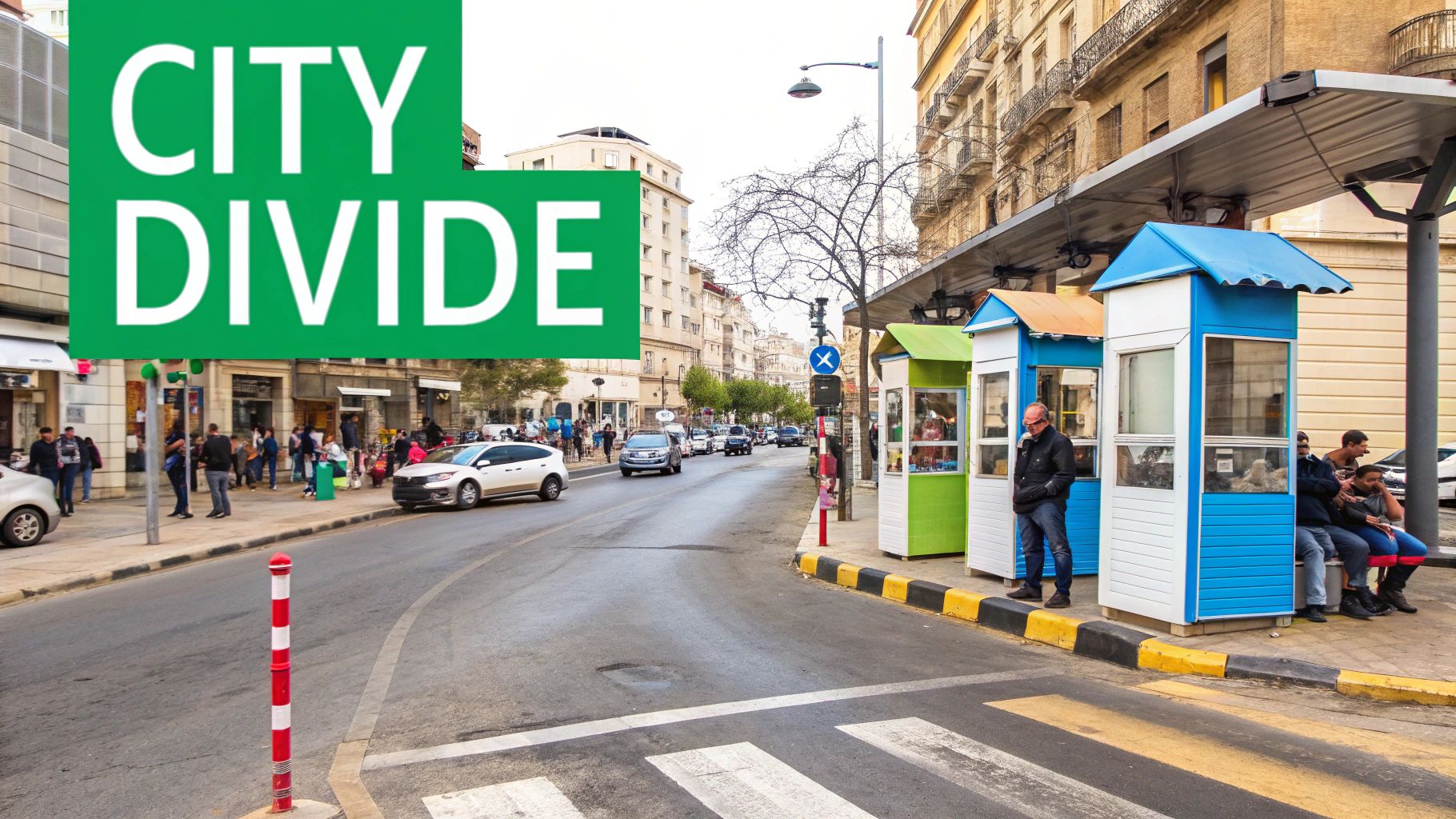
Today, the 68 vaulted rooms that once offered rest to weary travellers have been reborn. They now house a vibrant community of artists' workshops, galleries, and independent shops selling local handicrafts. The courtyard buzzes with life, filled with the tables of charming cafés. This transformation from a commercial stopover to a thriving cultural centre makes Buyuk Han one of the most essential things to see in Nicosia, offering a perfect blend of history, art, and relaxation.
Practical Tips for Your Visit
To make the most of your time at this historic inn, consider these practical tips for a fulfilling visit:
- Best Time to Visit: Aim for the afternoon when the artists' studios and craft shops are all open for business. The han truly comes alive at this time, offering the full experience.
- Taste of Tradition: Take a break at one of the courtyard cafés. Ordering a traditional Turkish coffee or a refreshing lemonade is a quintessential Buyuk Han experience.
- Explore Both Levels: Don't just stay in the bustling ground-floor courtyard. Venture up to the upper level, where many artists have their working studios. You can often watch them at work and purchase unique pieces directly from the creator.
- Check for Events: The han frequently hosts cultural events, live music, and exhibitions, particularly in the evenings or on weekends. It's worth checking local listings to see if anything special is scheduled during your visit.
3. Cyprus Museum: A Journey Through 5,000 Years of Island History
Located in the southern part of the city, the Cyprus Museum is the island's principal and largest archaeological museum, making it an unmissable stop for anyone interested in the rich tapestry of Cypriot civilisation. Established in 1882 during British rule, it houses an unparalleled collection of artefacts spanning from the Neolithic period to the early Byzantine era. This institution doesn't just display objects; it chronicles the island's entire ancient story through its art, trade, and daily life, solidifying its place as one of the most important things to see in Nicosia.
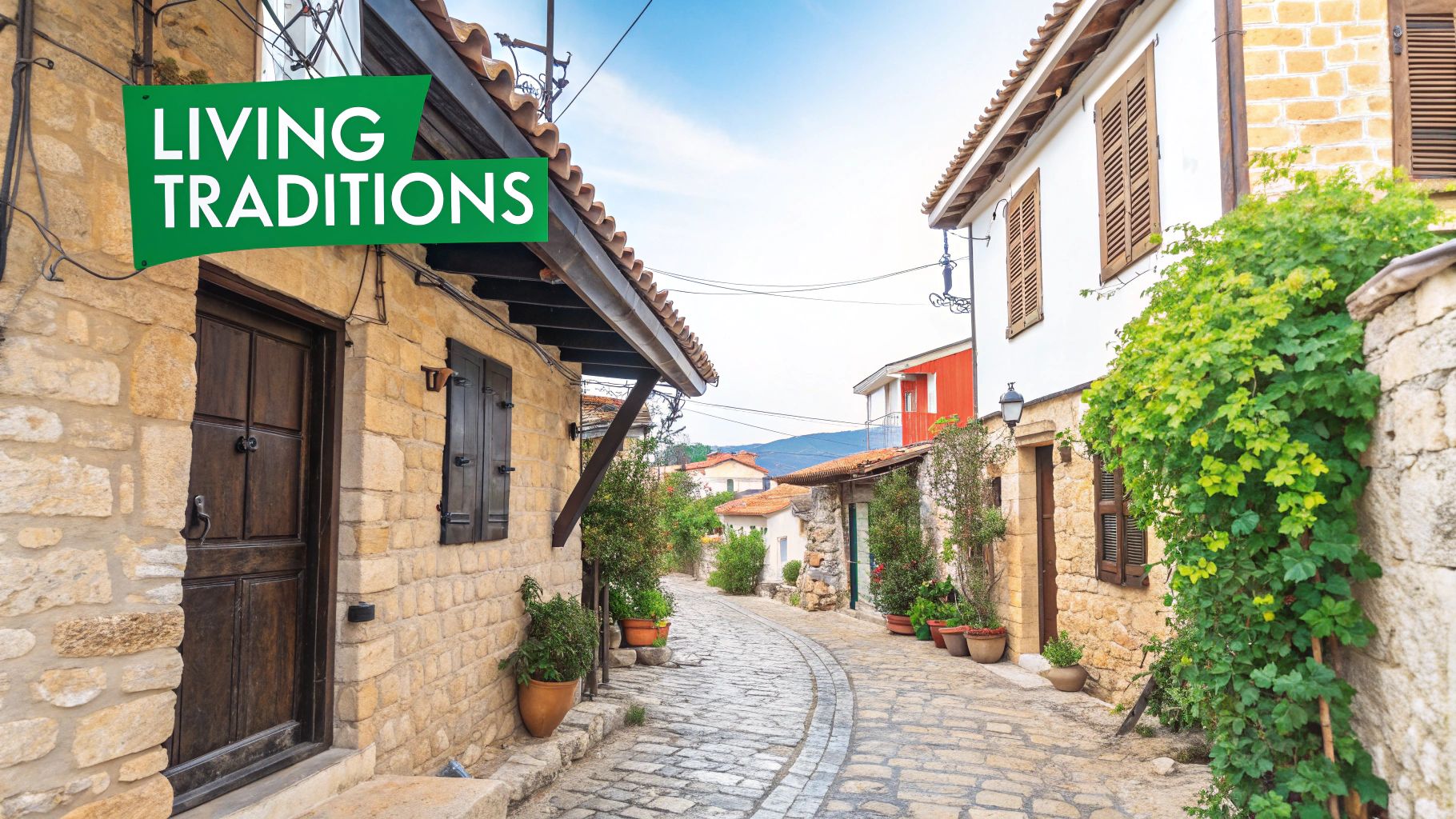
The museum's fourteen rooms are organised chronologically, guiding you through millennia of history. You'll encounter everything from simple prehistoric pottery to sophisticated Roman glassware and gold jewellery. Highlights include the hauntingly beautiful terracotta figures from the sanctuary at Agia Eirini and the world-renowned statue of Aphrodite of Soloi, an iconic symbol of ancient Cyprus. Exploring its halls provides profound context for the many other archaeological sites you might visit, as it's one of the most comprehensive things to do in Cyprus.
Practical Tips for Your Visit
To make the most of your time travel through Cypriot antiquity, a little planning goes a long way. Consider these tips for an enriching visit:
- Pacing Your Visit: Allow at least two to three hours for a thorough exploration. The collections are extensive, and rushing through them would be a disservice to their historical significance. Start with the chronological displays to follow the island's development logically.
- Key Exhibits: Don't miss the rooms containing the treasures from the Royal Tombs of Salamis, which offer a glimpse into the immense wealth and power of ancient city-kingdoms. Be sure to check for any temporary exhibitions, as the museum often hosts fascinating special displays.
- Deeper Insights: While the signage is informative, consider hiring an official museum guide or using an audio guide if available. This can bring the artefacts to life with stories and details that you might otherwise miss, transforming your visit from a viewing to an experience.
4. Ledra Street Crossing: A Walk Through a Divided Capital
The Ledra Street Crossing is more than just a thoroughfare; it’s a living museum of modern history and a powerful symbol of the island's complex political landscape. Located on Nicosia's primary shopping street, this pedestrian checkpoint was opened in 2008, bridging the Greek Cypriot south and the Turkish Cypriot north. Walking across this line offers a profound and unique experience, allowing you to step from one distinct cultural atmosphere into another in just a few moments.
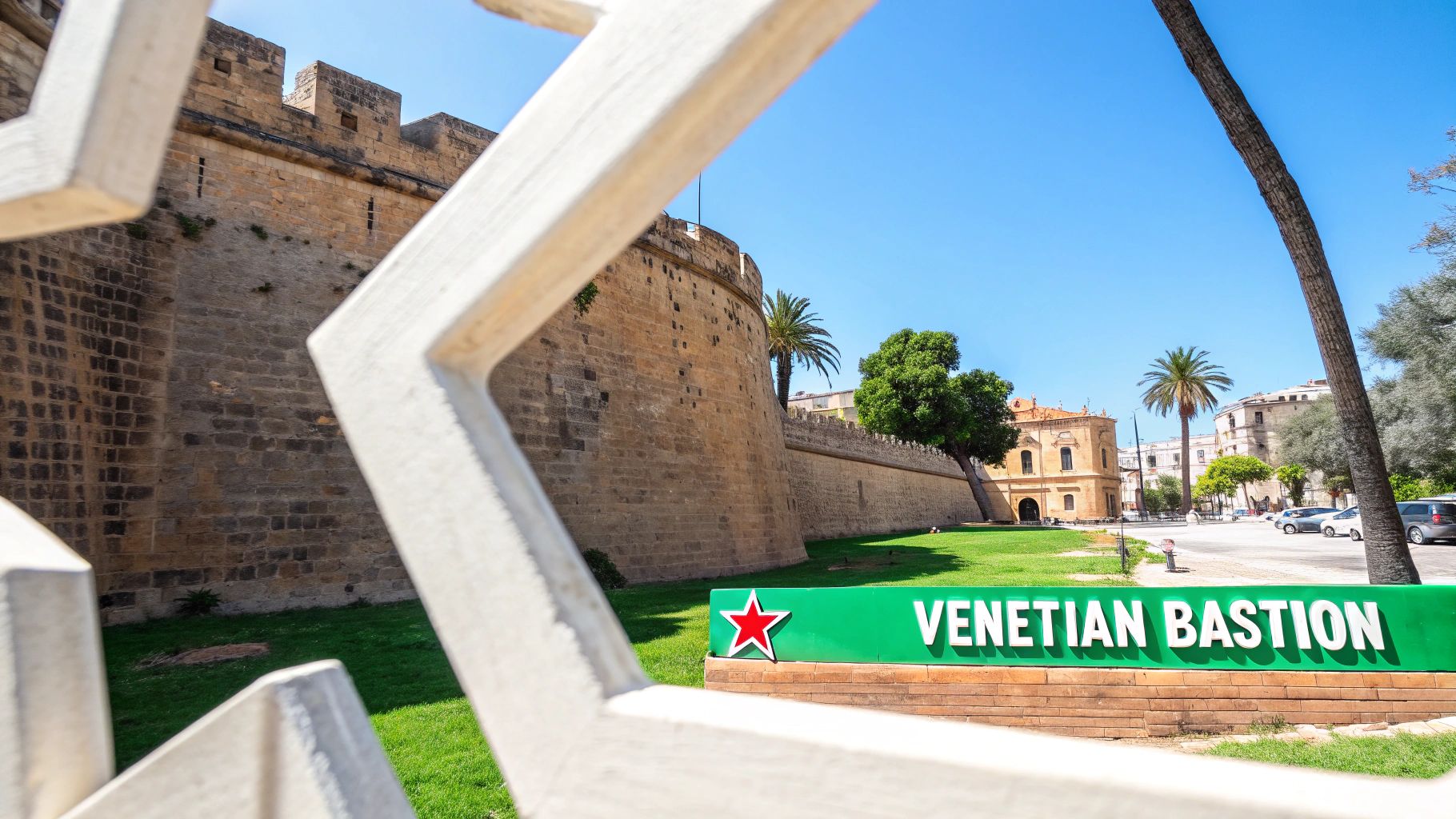
The transition is palpable. On one side, you have the familiar buzz of a modern European city, with international brands and bustling cafés. A few steps later, you enter a world rich with Ottoman influences, filled with traditional bazaars and the aroma of Turkish coffee. This stark contrast makes the crossing one of the most essential things to see in Nicosia, providing a tangible sense of the city's division and the lingering hope for reunification.
Practical Tips for Your Visit
To make the most of this unique crossing, a little preparation and awareness go a long way. Consider these tips for a smooth and insightful experience:
- Documentation: You must present a valid passport or national ID card (for EU citizens) to both sets of officials. Keep your document handy for a quick and easy process.
- Political Sensitivity: Be respectful of the complex history. Avoid initiating sensitive political discussions with officials or shopkeepers. The crossing is a symbol of both division and connection; observe with an open mind.
- Explore Both Sides: Don't just cross and turn back. Dedicate time to wander the streets on each side. Compare the architecture, sample the different cuisines, and soak in the contrasting ambiences to fully appreciate the experience.
- Currency: While the south uses the Euro (€), the north primarily uses the Turkish Lira (TRY). Many shops in the north accept Euros, but you will often get a better rate if you pay in Lira. Small exchange offices are available just after you cross.
5. Venetian Walls and Famagusta Gate: A Fortified Star of History
The Venetian Walls of Nicosia are not merely old fortifications; they are the very heart of the city's identity, a magnificent 16th-century star-shaped defence system that defines the historic centre. Built by the Republic of Venice to thwart Ottoman advances, this monumental project replaced the older, larger medieval walls with a state-of-the-art design featuring eleven heart-shaped bastions. Walking these walls offers a unique perspective on the city's layout and its division, making them one of the most essential things to see in Nicosia.
The most impressive and well-preserved of the three original entrances is the Famagusta Gate. Once a key military entry point, it has been beautifully restored and now serves as the Nicosia Municipal Arts Centre, a vibrant hub for exhibitions and events. This transformation from a symbol of war to a beacon of culture perfectly encapsulates the resilience and evolving spirit of the Cypriot capital. Exploring these walls provides deep insight into the strategic importance of Cyprus, a story you can explore further by learning more about where to go in Cyprus.
Practical Tips for Your Visit
To make the most of your exploration of the Venetian Walls and Famagusta Gate, a little planning goes a long way. Use these tips for an enjoyable and insightful journey around historic Nicosia:
- Best Time to Walk: The walls are exposed to the elements. Start your walk in the early morning or late afternoon to avoid the intense midday sun, especially during the summer months. The soft light during these times is also ideal for photography.
- Starting Point: Begin your tour at the Famagusta Gate. Its role as a cultural centre means you can often find information, maps, or even ongoing exhibitions to provide context before you set off along the ramparts.
- Stay Prepared: The full circuit is long, so even if you only plan to walk a section, bring a bottle of water, wear comfortable walking shoes, and apply sun protection. Information plaques are scattered along the route, offering historical details about each bastion.
6. Laiki Geitonia (Folk Neighbourhood): A Stroll Through Old Nicosia's Charm
Stepping into Laiki Geitonia is like journeying back to 18th-century Nicosia. This lovingly restored pedestrian quarter, located just off Ledra Street, was revitalised in the 1980s to preserve and showcase the capital's traditional urban character. It's a charming labyrinth of narrow, winding cobblestone lanes, whitewashed houses with colourful shutters, and overhanging wooden balconies adorned with vibrant flowers. The area was meticulously designed to feel like a living museum.
More than just a pretty facade, Laiki Geitonia is a vibrant hub of Cypriot culture. Here, you'll find artisan workshops where you can watch craftspeople at work, quaint shops selling local products like lace and silver filigree, and some of the city's most authentic tavernas. It represents a concentrated dose of Cypriot heritage and hospitality, making it one of the essential things to see in Nicosia for anyone wishing to experience the island’s traditional soul.
Practical Tips for Your Visit
To make the most of this picturesque neighbourhood, a little planning can enhance your experience. Consider these actionable tips for your exploration:
- Best Time to Visit: Arrive late morning to browse the shops as they open, then stay for lunch. The atmosphere is particularly lively as tavernas fill up, offering an authentic taste of Cypriot midday dining culture. Evenings are also magical when the lanes are softly lit.
- Dining Choice: For a genuine culinary experience, seek out a family-run taverna and order a "meze". This selection of small, traditional dishes allows you to sample a wide variety of local flavours, from grilled halloumi to spicy sausages and fresh dips.
- What to Look For: Keep an eye out for genuine handmade crafts rather than mass-produced souvenirs. Look for local Lefkara lace (Lefkaritika), intricate silver jewellery, and ceramics. Don't be shy about chatting with the shop owners, many of whom are artisans themselves.
7. Cyprus Classic Motorcycle Museum: A Journey Through Two-Wheeled History
Tucked away in the heart of the Old City, the Cyprus Classic Motorcycle Museum is a surprisingly captivating stop and one of the more unique things to see in Nicosia. Founded by enthusiast Andreas Nicolaou, this passionate project is home to an impressive collection of over 150 motorcycles, chronicling nearly a century of design and engineering innovation from 1914 to 1983. It's a nostalgic trip down memory lane, even for those who aren't die-hard bikers.
The museum showcases legendary brands such as AJS, Norton, BMW, Harley-Davidson, and Triumph. Each exhibit tells a story, from military bikes that served in the Second World War to the sleek racers that defined an era. Beyond the bikes, the space is filled with fascinating memorabilia, vintage posters, and spare parts, creating an atmosphere that feels less like a sterile gallery and more like the ultimate enthusiast's garage. It's a perfect rainy-day activity or a welcome break from ancient ruins and historic monuments.
Practical Tips for Your Visit
To get the most out of this charming museum, a little planning can enhance your experience. Here are some actionable tips for your visit:
- Chat with the Owner: If the founder, Andreas Nicolaou, is present during your visit, don't hesitate to ask him about the collection. His personal stories and deep knowledge of specific models bring the exhibits to life in a way no placard can.
- Opening Hours: The museum's opening times can sometimes vary. It's wise to call ahead or check their official website to confirm they are open before you make the trip, especially during public holidays or off-peak seasons.
- Time Allocation: While the museum is compact, the sheer density of bikes and artefacts means you should allow at least one to two hours to explore properly without rushing. This gives you time to appreciate the details on each machine.
8. Omeriye Mosque (Augustinian Church): A Gothic Heart with Islamic Soul
Tucked away in the restored Laiki Geitonia quarter, the Omeriye Mosque presents another captivating chapter in Nicosia's story of architectural and cultural layering. Originally the 14th-century Church of Saint Mary of the Augustinians, its robust Gothic stonework and pointed arch windows speak to a grand mediaeval past. According to tradition, the Ottoman commander Lala Mustafa Pasha believed the site was where the Caliph Omar had once rested during a 7th-century Arab raid, leading to its conversion into a mosque in 1571.
The mosque’s most striking feature is this very blend of styles. The sturdy, honey-coloured Lusignan-era masonry stands in contrast to the slender minaret that now rises alongside it. Inside, much of the original Gothic vaulting remains, creating a serene and historically rich atmosphere. Its survival and adaptation make it one of the more intimate yet essential things to see in Nicosia, offering a quieter but equally profound glimpse into the island's multifaceted heritage.
Practical Tips for Your Visit
To make the most of your visit to this historic landmark, a blend of cultural respect and keen observation is essential. Here are some actionable tips for your visit:
- Dress Code: As an active place of worship, modest dress is required. Ensure your shoulders and knees are covered. Women should also cover their hair; a light scarf is perfect for this.
- Etiquette: Always remove your shoes before entering the main prayer hall. Visits should be quiet and respectful, especially if people are praying. It is best to avoid visiting during the main prayer times, which are usually posted near the entrance.
- Combine Your Visit: The mosque is located right next to the charming lanes of Laiki Geitonia and the Omeriye Hamam (baths). Plan to explore these attractions together to fully appreciate the beautifully restored historic neighbourhood.
- Architectural Details: Take a moment in the courtyard to admire the surviving Gothic elements. Look for the original ornate doorways and the remnants of the church's structure, which are best viewed from the outside before you enter.
9. Nicosia Municipal Arts Centre: Industrial Heritage Meets Contemporary Vision
For a dose of modern culture, the Nicosia Municipal Arts Centre (NiMAC) is an essential stop. Housed within the magnificently restored Old Power Station, this venue is a powerful symbol of the city's forward-thinking cultural scene. The building itself is a masterpiece of industrial architecture, where its historical function as a powerhouse has been skillfully repurposed to fuel the city's contemporary artistic expression. It's one of the most dynamic things to see in Nicosia for art lovers.
The centre serves as Nicosia's premier contemporary art institution, associated with the Pierides Foundation. Inside its cavernous, high-ceilinged halls, you'll find a constantly changing programme of exhibitions featuring provocative works by both established and emerging Cypriot and international artists. The space is not just for viewing art; it's a living cultural hub that hosts workshops, film screenings, lectures, and performances, creating a vibrant dialogue between art and the public.
Practical Tips for Your Visit
To get the most out of your visit to this cultural hub, a little planning can enhance your experience. Here are some actionable tips:
- Check the Schedule: The Centre's programme is dynamic and event-driven. Always check the official NiMAC website for the current exhibition schedule, opening hours, and information on any special events or workshops taking place during your visit.
- Attend an Opening: For a truly immersive cultural experience, try to attend an exhibition opening night. These events are often free, bustling with local artists and art enthusiasts, and offer a great opportunity to engage with the city's creative community.
- Explore the Architecture: Don't just focus on the art on the walls. Take time to appreciate the building itself. Look for the original industrial fittings and architectural details that have been preserved, creating a stunning contrast with the contemporary artworks.
- Combine Your Visit: NiMAC is located near the Famagusta Gate, making it easy to combine with a walk along the Venetian walls or a visit to other nearby historical sites for a well-rounded day of sightseeing.
Top 9 Attractions in Nicosia Compared
| Item | Implementation Complexity 🔄 | Resource Requirements ⚡ | Expected Outcomes 📊 | Ideal Use Cases 💡 | Key Advantages ⭐ |
|---|---|---|---|---|---|
| Selimiye Mosque (Cathedral of Hagia Sophia) | Moderate (restoration & preservation) | Low (public site, minimal intervention) | High cultural & architectural appreciation | Historical tourism, architectural photography | Unique Gothic-Islamic blend, free entrance |
| Buyuk Han (Great Inn) | Moderate (maintenance of complex) | Moderate (shops, cafes, events) | Authentic cultural experience, commercial activity | Shopping, cultural events, artisan visits | Largest caravanserai, vibrant cultural hub |
| Cyprus Museum | High (museum curation & conservation) | High (artifact preservation, staffing) | Comprehensive historical education | Educational visits, archaeological study | Extensive artifacts, educational displays |
| Ledra Street Crossing | Low (border crossing operation) | Low (security & admin) | Political awareness, unique city experience | Cross-community visit, political tourism | Symbolic division point, easy pedestrian access |
| Venetian Walls and Famagusta Gate | Moderate (heritage site upkeep) | Moderate (maintenance of fortifications) | Historical immersion, outdoor activity | Walking tours, cultural events | Iconic fortifications, free access |
| Laiki Geitonia (Folk Neighborhood) | Low (urban restoration ongoing) | Low (pedestrian zone maintenance) | Authentic cultural atmosphere | Souvenir shopping, traditional dining, walking | Car-free zone, preserved architecture |
| Cyprus Classic Motorcycle Museum | Moderate (collection curation) | Moderate (specialized maintenance) | Niche automotive history education | Motorcycle enthusiasts, collectors | Rare vintage motorcycles, knowledgeable host |
| Omeriye Mosque (Augustinian Church) | Moderate (conservation & worship needs) | Low (minimal interventions) | Religious and architectural interest | Religious visits, history lovers | Gothic-Islamic blend, peaceful atmosphere |
| Municipal Arts Centre | Moderate (exhibition programming) | Moderate (event and exhibitions) | Contemporary cultural enrichment | Art lovers, workshop participants | Restored industrial building, diverse programming |
Your Nicosia Adventure Awaits
Nicosia is far more than a simple collection of landmarks; it is a city where history is not confined to museums but is etched into the very stones of its streets, walls, and shared spaces. As we have journeyed through this guide, it has become clear that the most compelling things to see in Nicosia are those that tell a story of transformation, resilience, and coexistence. From the awe-inspiring architectural fusion of the Selimiye Mosque to the poignant reality of the Ledra Street crossing, each site offers a unique lens through which to understand Cyprus itself.
This city invites you to be an active participant, not just a passive observer. When you wander through the restored courtyard of the Büyük Han, you are walking in the footsteps of centuries of merchants. When you admire the intricate artefacts in the Cyprus Museum, you are connecting with millennia of island civilisation. These experiences are not isolated; they weave together to form a rich and complex picture of a capital that has consistently adapted and endured.
From Itinerary to Experience
The true essence of Nicosia reveals itself in the moments between visiting the major attractions. It is found in the simple pleasures: enjoying a traditional Cypriot coffee in Laiki Geitonia, discovering a hidden artist's studio near the Venetian Walls, or simply observing the vibrant daily life that unfolds on both sides of the Green Line. Use this guide as your foundation, but allow yourself the freedom to explore beyond the list.
Here are some final takeaways to transform your visit into an unforgettable adventure:
- Embrace the Contrast: Actively seek out the juxtaposition of old and new, of different cultures and histories. Understanding the blend of Gothic, Venetian, Ottoman, and modern influences is key to appreciating the city's unique character.
- Walk the Line: Don't just cross at Ledra Street; walk alongside the Green Line in different areas. This will give you a more profound sense of Nicosia's status as the world's last divided capital.
- Engage with Locals: Whether it's a shopkeeper in the old town or a guide at a museum, local stories will enrich your visit immeasurably. Cypriot hospitality is renowned for a reason.
Ultimately, the many incredible things to see in Nicosia serve as gateways to a deeper understanding of this remarkable island. Your visit is an opportunity to witness history in the making, to see how a city can be both a monument to its past and a beacon for its future. Let the narrow, winding streets guide you, be open to unexpected discoveries, and you will leave with memories that go far beyond a typical holiday. Your personal Nicosia story is waiting to be written.
Ready to plan the rest of your island journey? For more in-depth guides, local secrets, and tailored itineraries covering everything from coastal paradises to mountain villages, visit SayCyprus. We provide the expert insights you need to explore every corner of this incredible island. Discover your perfect Cypriot adventure at SayCyprus.




